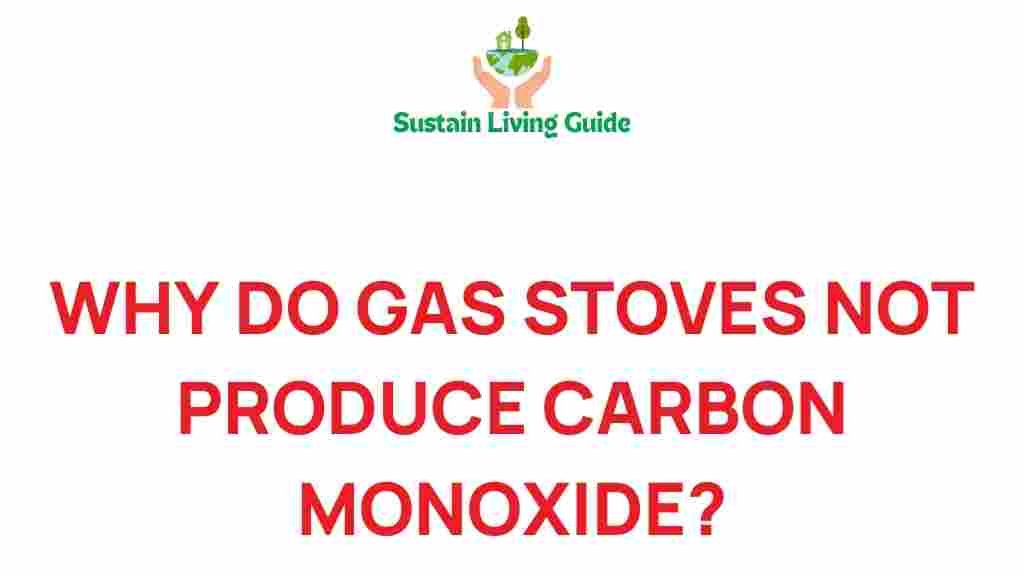Unveiling the Truth: Do Gas Stoves Really Emit Carbon Monoxide?
Gas stoves have been a staple in kitchens for generations, valued for their efficiency and the control they offer while cooking. However, concerns have arisen regarding the safety of gas stoves, particularly around the emission of carbon monoxide (CO). This article aims to delve deeper into the relationship between gas stoves and carbon monoxide, providing clarity on this important topic.
Understanding Gas Stoves
Gas stoves operate by burning natural gas or propane to produce heat for cooking. While they are widely praised for their instant heat and precise temperature control, the combustion process does raise questions about indoor air quality and safety.
What is Carbon Monoxide?
Carbon monoxide is a colorless, odorless gas produced by the incomplete combustion of fossil fuels, including natural gas. It can be harmful or even fatal when inhaled in high concentrations, making it crucial for homeowners to be aware of potential sources in their environment.
Do Gas Stoves Emit Carbon Monoxide?
Yes, gas stoves can emit carbon monoxide, especially if they are not functioning properly. Here are some key points to consider:
- Combustion Process: When gas burns in a stove, it ideally produces carbon dioxide and water vapor. However, if there is insufficient oxygen or improper ventilation, carbon monoxide can be created.
- Ventilation: Good ventilation is essential in any kitchen using gas appliances. Lack of proper airflow can lead to the accumulation of carbon monoxide.
- Maintenance: Regular maintenance of gas stoves can reduce CO emissions. Faulty burners or gas leaks can increase the risk of carbon monoxide production.
Factors Influencing Carbon Monoxide Emissions
Several factors can influence the amount of carbon monoxide emitted by gas stoves:
- Type of Gas: Natural gas typically produces less CO than propane.
- Burner Design: Some stoves may be designed to minimize CO emissions better than others.
- Cooking Practices: The way food is prepared can also affect emissions. For instance, cooking at high temperatures may create more CO.
Health Risks Associated with Carbon Monoxide
Exposure to carbon monoxide can pose serious health risks. Symptoms of CO poisoning can include:
- Headaches
- Dizziness
- Weakness
- Confusion
- Nausea
- Loss of consciousness in severe cases
Long-term exposure, even at low levels, can lead to more significant health problems, particularly for vulnerable populations like children, the elderly, and those with preexisting health conditions.
How to Reduce Carbon Monoxide Emissions from Gas Stoves
Reducing the risk of carbon monoxide emissions from gas stoves involves a combination of proper usage, maintenance, and safety measures:
- Install a Ventilation System: Ensure your kitchen is equipped with a range hood or an exhaust fan to help expel combustion gases.
- Keep Windows Open: Whenever possible, open windows while cooking with gas to improve airflow.
- Regular Maintenance: Schedule annual inspections of your gas stove to ensure it is functioning correctly and safely.
- Use Carbon Monoxide Detectors: Install CO detectors in your home, especially near sleeping areas, to provide an early warning of dangerous levels of carbon monoxide.
Step-by-Step Process for Ensuring Safe Use of Gas Stoves
To ensure safe use of gas stoves and minimize the risk of carbon monoxide emissions, follow this step-by-step process:
Step 1: Check for Proper Installation
Ensure your gas stove is installed correctly and that all connections are secure. If you notice any gas odors, turn off the stove and contact a professional immediately.
Step 2: Maintain Clean Burners
Regularly clean the burners and ensure they are free from food debris. Blocked burners can lead to incomplete combustion and increased CO emissions.
Step 3: Utilize Ventilation
Always use ventilation when cooking. Turn on your range hood and, if necessary, open windows to promote airflow.
Step 4: Monitor Indoor Air Quality
Keep an eye on your indoor air quality. If you notice any unusual symptoms or a persistent gas smell, take action immediately.
Step 5: Test Carbon Monoxide Detectors
Regularly test your carbon monoxide detectors to ensure they are functioning properly. Replace batteries as needed and follow manufacturer instructions for maintenance.
Troubleshooting Carbon Monoxide Issues with Gas Stoves
If you suspect carbon monoxide issues related to your gas stove, here are some troubleshooting tips:
Identify Symptoms of CO Poisoning
Be vigilant about recognizing the symptoms of carbon monoxide poisoning in your household. If anyone experiences symptoms, exit the home immediately and seek fresh air.
Inspect Your Stove
Look for any visible issues with your gas stove:
- Check for yellow or orange flames instead of blue flames.
- Inspect gas connections for leaks.
- Ensure that the burners ignite properly.
Seek Professional Help
If you notice any abnormalities, it’s crucial to call a professional. They can conduct a thorough inspection and make necessary repairs or adjustments.
Conclusion
Gas stoves can emit carbon monoxide, especially if not used or maintained properly. While the risks can be managed through diligent care and safety practices, awareness is key. By ensuring proper installation, regular maintenance, and effective ventilation, you can enjoy the benefits of cooking with gas stoves while minimizing health risks. Always prioritize safety by monitoring for symptoms of carbon monoxide exposure and using detectors to safeguard your home.
For more information on gas stoves and their safety, visit this resource.
Stay informed, stay safe, and enjoy your cooking experience!
This article is in the category Energy and created by SustainLivingGuide Team

4 thoughts on “Unveiling the Truth: Do Gas Stoves Really Emit Carbon Monoxide?”